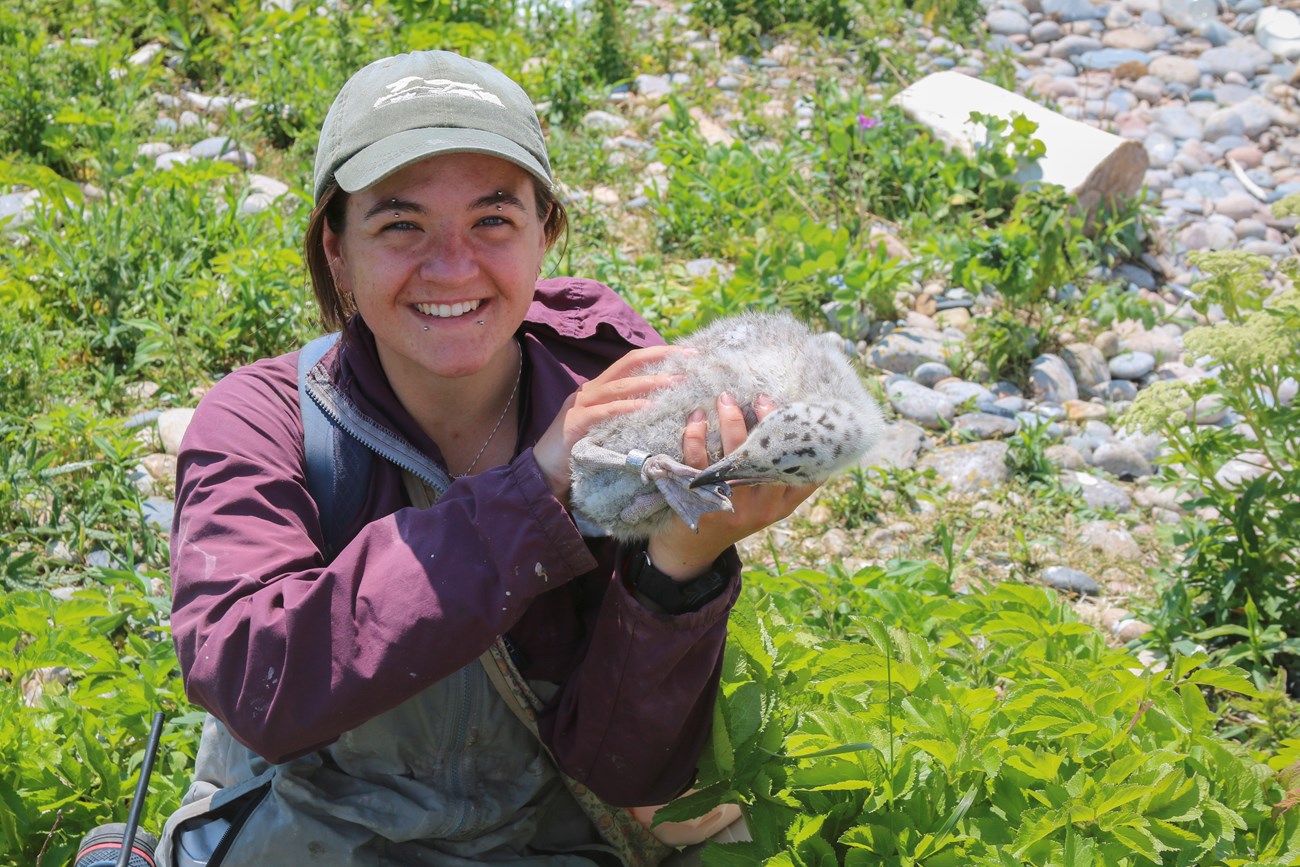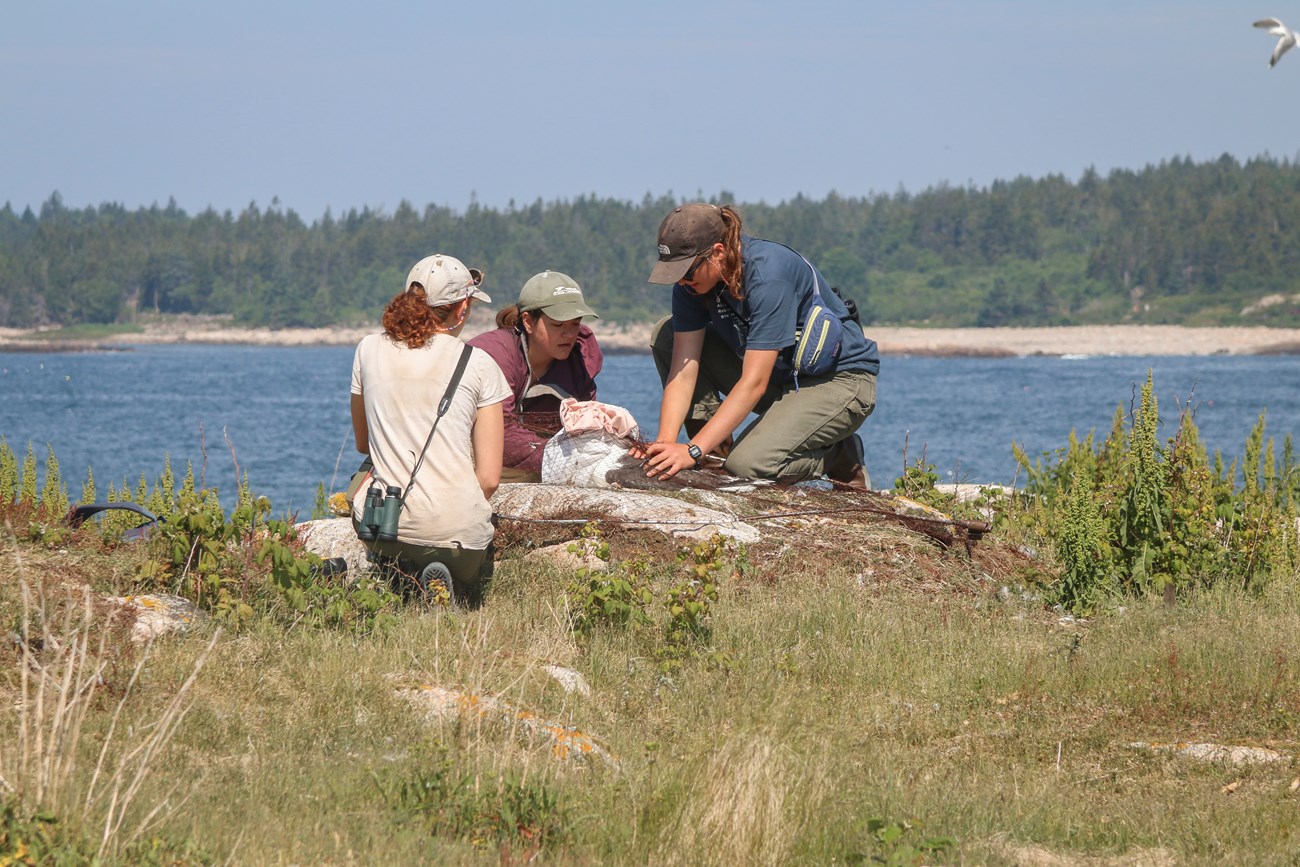Last updated: September 23, 2024
Article
Seabird Sanctuaries: Tracking Health and Habits Across Acadia's Remote Islands

Photo courtesy of College of the Atlantic, Used with Permission.
Acadia National Park encompasses not only the 40,000 acres of Mount Desert Island, but also consists of over 120 additional islands in the nearby region. While humans might not live on all these islands, they are vital sanctuaries for seabirds.
The habits and overall health of those seabirds has been the long-term fascination of John Anderson, a professor of ecology and natural history at College of the Atlantic who has studied the region’s seabirds for over four decades.
Many of these rocky, offshore islands are relatively free from predators where cormorants, gulls, black guillemots, common eiders, and leach’s storm-petrels go to nest and raise young, and it is John Anderson and his research students’ goal to find out more about their habits and overall health.
With grant support from Friends of Acadia, Anderson's research students have monitored seabirds on 13 islands in and around Acadia National Park over the past two summers.

Photo courtesy of College of the Atlantic, Used with Permission.
Building on decades of previous research, Anderson previously conducted a large study on sea level rise and counting nesting colonies around the early 2010s. Using the same counting methodology utilized a decade prior, Anderson and his research students have tagged and tracked seabirds, beginning with Great Duck Island and Mount Desert Rock in 2023.
This was the first year that College of the Atlantic began tagging park-owned islands, after having previously conducted their research on college-owned islands.
In 2024, their fieldwork extended to Thrumcap Island, Shabby Island, Schoodic Island, and Great Spoon Island, with additional boat-based surveys conducted on White and Black Horse islands.

Photo courtesy of College of the Atlantic, Used with Permission.
As a part of the survey, students deployed solar-powered GPS tags on Herring Gulls. The tags connect to a cellular network, and every day at noon, the tracking information downloads. Informing Anderson and his research students where the gulls have been for the last 24 hours.
“Gull are incredible creatures of habit,” Anderson told Friends of Acadia.
The gulls from Great Duck Island tend to travel to Little Cranberry Island and locations west, like Deer Isle and Blue Hill Bay—but never to Frenchman Bay. Gulls from Schoodic Island go to Winter Harbor, Bar Harbor, and Frenchman Bay—but never to Blue Hill Bay.Gulls sometimes detour to unexpected places, too.
“We had one very odd bird that had a GPS tag on from Great Duck that took off from Great Duck, flew down the coast, and for reasons I still don’t understand, when he got into New Hampshire, he hung a right and went up into the White Mountains and spent a day or two hanging out in the Whites,” Anderson said. “And then he came back down to the coast and went on down to Virginia.”

Photo courtesy of College of the Atlantic, Used with Permission.
All the moving around from island to island represents a potential problem if the birds are carrying Highly Pathogenic Avian Influenza (HPAI), a highly contagious and neurological disease that attacks multiple internal organs of the bird and can wipe out entire flocks in days.
The team added monitoring of HPAI in 2024, testing 100 birds to date. This large sample size will help provide a good measure of possible infection levels of HPAI. Results are not yet in, but Anderson was glad to report that no significant seabird mortality was detected in any of the visited islands. To prevent cross-contamination, students meticulously disinfect their equipment and footwear between island visits.

Photo courtesy of College of the Atlantic, Used with Permission.
The monitoring of seabird islands is additionally important as earth's climate continues to change.
Along with checking the rise in sea level, Anderson and his students have been concerned about the status of island vegetation. As temperatures continue to rise, there could be a significant impact and alteration of the islands’ growing vegetation in the near future.
This monitoring of island vegetation is also important as herring gulls prefer nests comprised of certain vegetation. If the plant life were to change completely, then it might potentially discourage nesting and encourage the birds to relocate elsewhere.

Photo courtesy of College of the Atlantic, Used with Permission.
Anderson and his research students, along with park staff, are eagerly awaiting new data regarding following post-breeding season as the seabirds disperse to their respective wintering areas.
Meanwhile, they have sent swab samples to the Tufts School of Veterinary Medicine and are awaiting results on HPAI presence.
Anderson hopes to expand this research to additional islands in the future, continuing to shed light on the health and behaviors of Acadia’s seabird populations.
